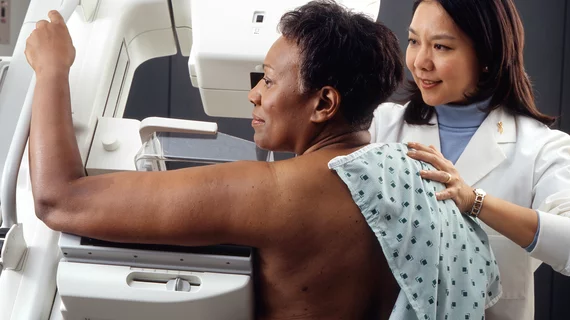Mammogram findings linked to heightened risk of CVD, type 2 diabetes and hypertension
Fat-enlarged axillary nodes detected on screening mammograms are associated with heightened risks of cardiovascular disease (CVD), type 2 diabetes and hypertension, according to new data presented at ARRS 2024, the annual meeting of the American Roentgen Ray Society (ARRS).
The study’s authors examined electronic medical record data from 1,200 women between the ages of 40 and 75 years old with known coronary artery disease who underwent a routine mammogram from 2011 to 2012. A team of two radiologists evaluated each mammogram to measure the length of the largest visible axillary lymph node in each breast, focusing on each patient’s largest visible node. Nodes were considered enlarged if they were larger than 20 mm in length due to expanded fatty hilum.
The group then monitored the next decade of data, focusing on major adverse cardiovascular events (MACEs) such as deaths, heart attacks and strokes.
Overall, 74.6% of women had a visible axillary lymph node on their index mammogram, and 19.1% had fat-enlarged nodes. Women with fat-enlarged nodes faced an increased risk of being diagnosed with CVD, type 2 diabetes and hypertension. The authors also found that fat-enlarged nodes were linked to an increased MACE risk and higher levels of low density lipoprotein cholesterol.
“Incorporating fat-enlarged nodes into CVD risk models has the potential to improve CVD risk stratification without additional cost or additional testing,” researcher Jessica Rubino, MD, a radiology resident with Dartmouth Hitchcock Medical Center in Lebanon, New Hampshire, said in a prepared statement from ARRS. “Fat-enlarged axillary lymph nodes visualized on screening mammography may increase the ability to identify women who would benefit from CVD risk reduction strategies and more intensive risk assessment with coronary artery CT.”
Rubino et al. received the Summa Cum Laude Award from ARRS for their research.

